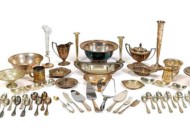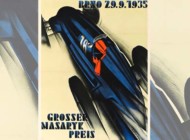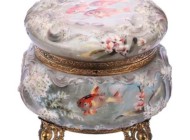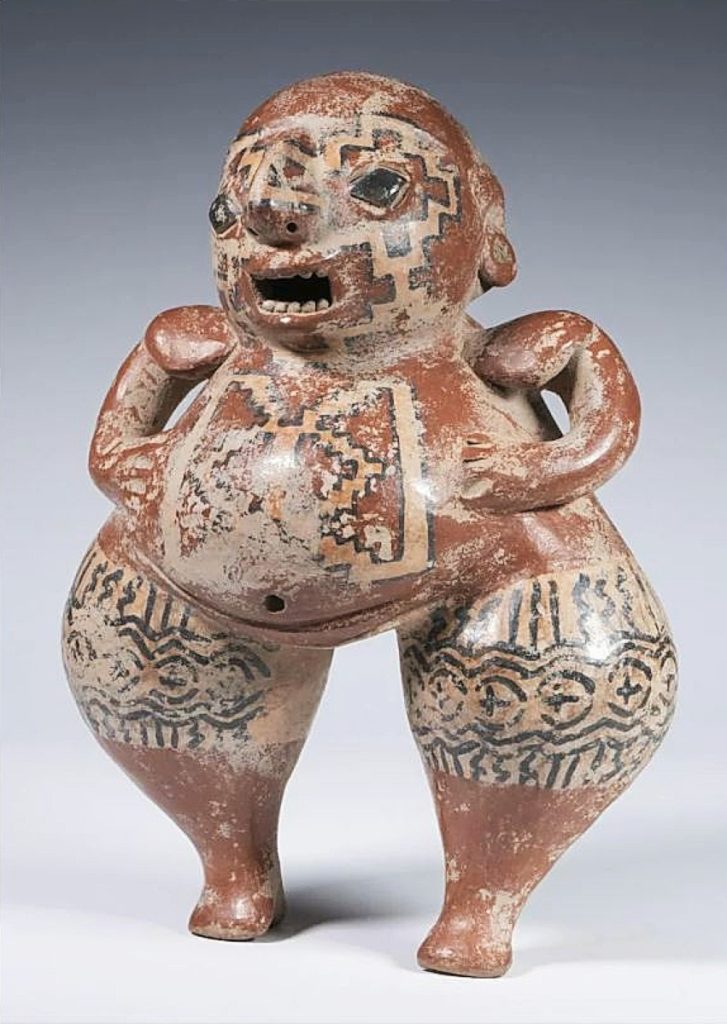
This statuesque figure, a hollow red clay figure of a man with black and white geometric decoration, reached the apex of the sale at $7,200. It was from Chupicuaro, Mexico, circa 400 CE, and stood 9¼ inches tall ($600/800).
Review by Madelia Hickman Ring, Photos Courtesy Thomaston Place Auction Gallery
THOMASTON, MAINE – Thomaston Light’s July 29 “Native Art of the Americas” auction featured nearly 200 lots of Indigenous arts from North, Central and South America, notably early pottery, sculptures, rugs and jewelry.
Though all of the Americas were represented, works from Mexico and Canada appear to have held the most appeal to bidders, earning eight of the top 12 prices. At the head of the sale, and selling for $7,200, was a red clay hollow figure of a man from Chupicuaro, Mexico, circa 400 CE. The 9¼-inch standing figure, which featured an open mouth, hands resting on a rotund torso, and bulbous legs decorated with black and white geometric decoration, had been estimated at $600/800.
A considerably earlier example of another red clay figure from Mexico, this one dated to (1150-52 BCE) earned a fifth place finish and sold for $1,750. From Jalisco, the seated female figure was more than three times larger than the male figure and had some repairs that may have kept it within its $1,5/2,500 estimate.
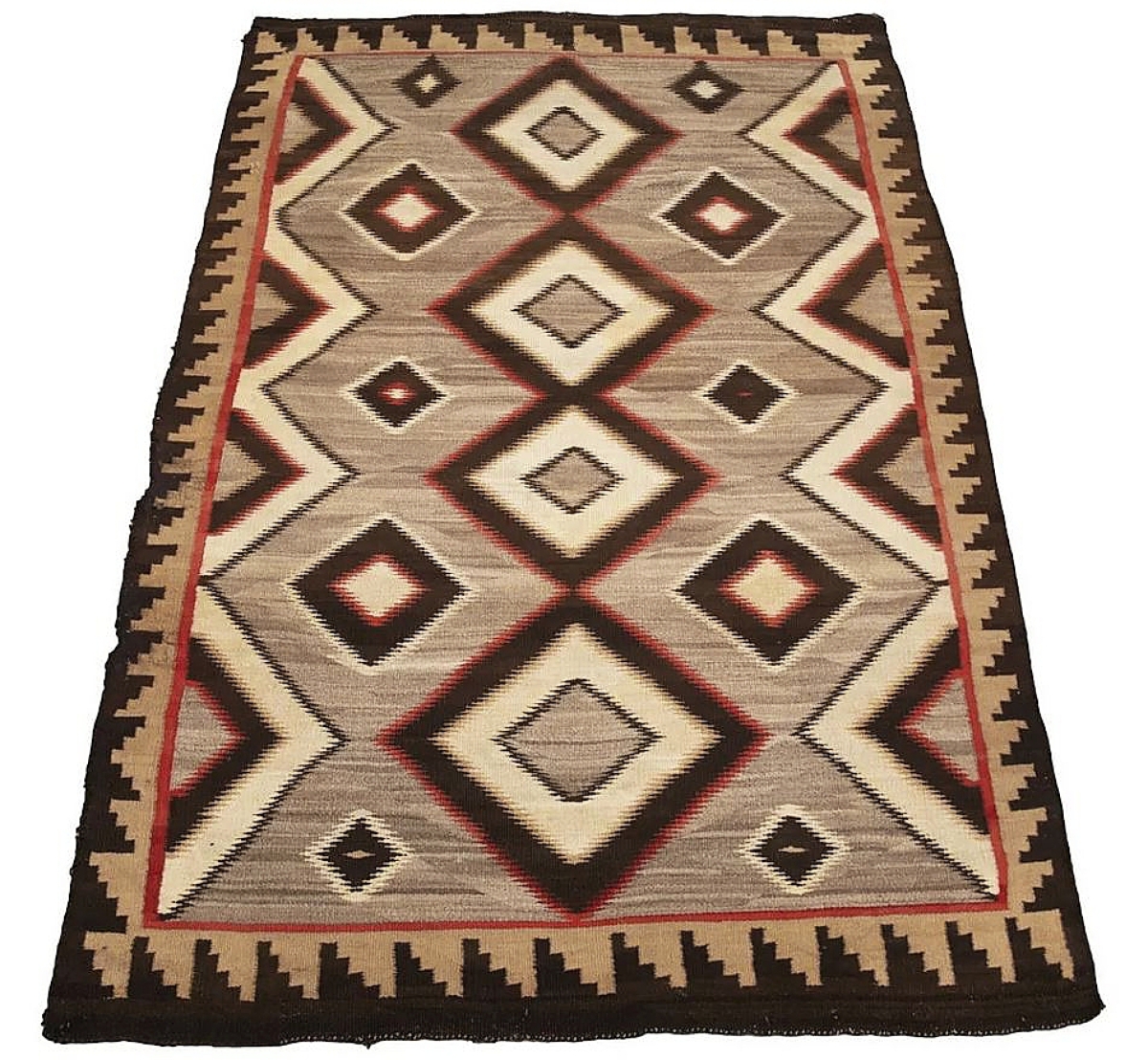
The highest price rug in the sale, and the highest result for a Native American work from the United States, was $2,500 for this circa 1900 Navajo rug in the “four diamond eye dazzler” pattern ($1/2,000).
The jaunty red clay pottery dogs made in Colima, Mexico, are perennial favorites among collectors of tribal and ethnographic works of art and artifacts; the sale featured just one example, which stood 9 inches tall and measured 14 inches long. Dated to 300-900 CE, the varnished red clay surface had some losses that may have kept the price at $1,250, just shy of its $1,5/2,500 estimate.
A little less than half the sale was made by the Inuit people, in a wonderful variety of materials, forms and ages. Bringing the highest price of these was a gray soapstone carving of a kneeling woman with a child on her back and a bird spirit perched on her head, signed and with the original the Canadian Government Certification card that identified the piece as having been made by Kiawak Ashoona, a Cape Dorset Inuk, in 1996. Noted to be in good condition, “Woman and Child” appealed to bidders, who took it to $3,900 from a $600/800 estimate.
Selections of carved walrus tusks and other scrimshawed pieces were in modest selection, led at $1,250 by an Inuit sculpture with scrimshaw walrus tusks by an unsigned artisan in Northern Quebec, Canada, on a carved green soapstone base with a fully carved walrus. The tusks were two halves of one and were embellished with tiers of bears, hunters in parkas, mukluks, Canada Geese, seal, walrus, kayak and igloos, the reverse with the same as well as stretched drying skins.
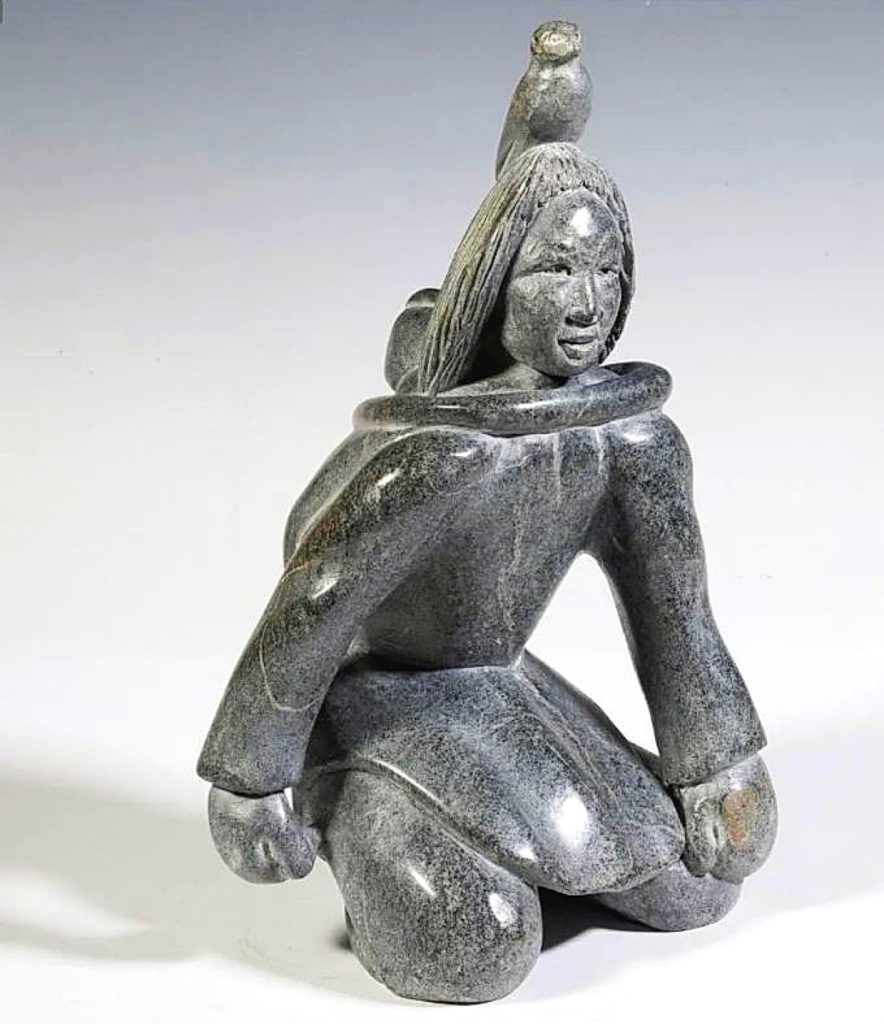
Good condition and having retained its original Canadian Government Certification card which identified it as having been carved in 1996 by the Cape Dorset Inuk, Kiawak Ashoona, “Woman and Child” may have called on the bird spirit, represented on the woman’s head, to fly to $3,900 ($600/800).
The piece had provenance to the collection of William F Bergen, D.O., an orthopedist who served as the State Medical Examiner for the state of Maine from 1975 to 1991. Bergen spent five years in Alaska, providing medical care to the Yup’ik and the people of the Kuskokwim Delta. A total of 18 other lots in the sale were also from the Bergen collection and covered the categories of baskets, tools, artwork, scrimshaw, parka trim and a Yup’ik spirit mask of a fox.
Among Inuit and Eskimo carvings by known or attributed makers, a soapstone carving of an adult with a child, just 7 inches tall but inscribed “LP,” was possibly attributed to Looty Pijamini (Canadian, b 1953) that finished at $938, and a shamanic carving that depicted a transformational figure of a polar bear and man, carved by Hank Napowatuk (Napaghutaq) in the Yup’ik town of Gambell on St Lawrence Island in the North Bering Sea. It transformed its $350/450 estimate into $720.
An unusual Twentieth Century whale vertebrae, carved by an anonymous Inuit carver into the grimacing face and outstretched arms of a man, had bidders with stiff resolve, one of which took it to $750 from an estimate of $300/500.
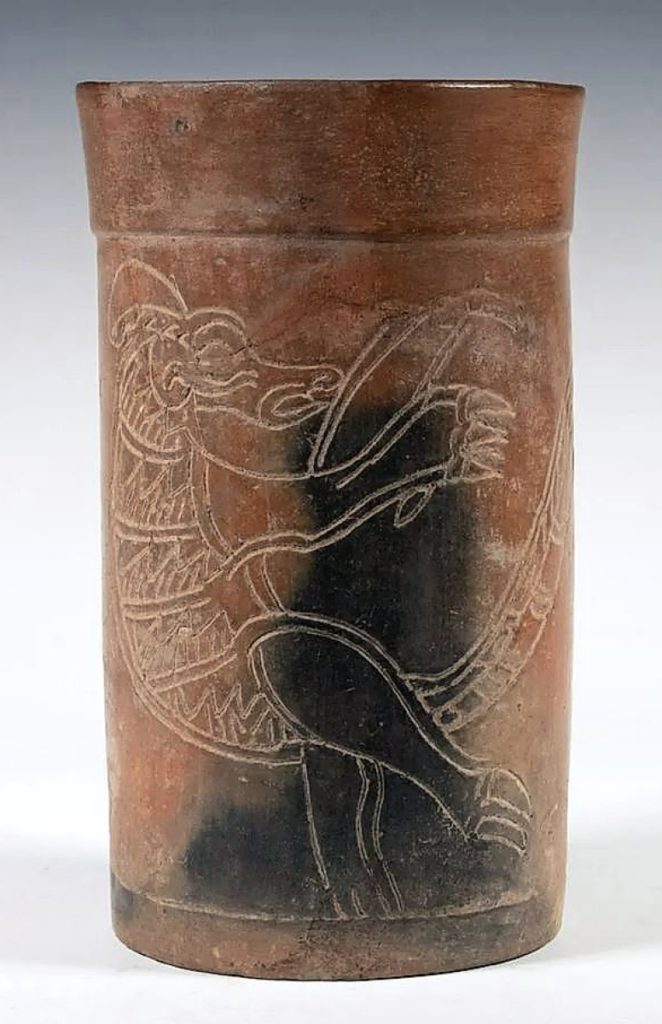
Top among South American pottery was this circa 1200 CE, Chimu, Peru, jaguar pottery container, with incised decoration on a cylindrical form. It finished above estimate for $438 ($300/400).
Interest in Native and tribal works from the United States saw rugs and pottery vying for most popular with collectors. Stitching up a small advantage at $2,500 was a large Navajo rug, circa 1900, in the “four diamond eye dazzler” pattern in red, cream and browns, that measured just over 5 by 7½ feet. Another Navajo rug of a similar vintage and “very good condition,” and of small size and worked in a 26-diamond pattern in black, red, tan and cream, found a new home at $1,063.
An impressive Anasazi storage jar, from the Tularose Basin near Almagordo, N.M., 1100-1250 CE, set the high water mark for Native American pottery, earning $2,375. Decorated in a geometric black and white decoration allover, it had some restorations but still sold within estimate. It beat out the first lot of the sale, which was was an Acoma olla with orange and black decoration in the form of double thunderbirds.
Prices quoted include the buyer’s premium as reported by the auction house.
Thomaston Place Auction Galleries’s next sale will be August 26-28. For additional information, 207-354-8141 or www.thomastonauction.com.
















